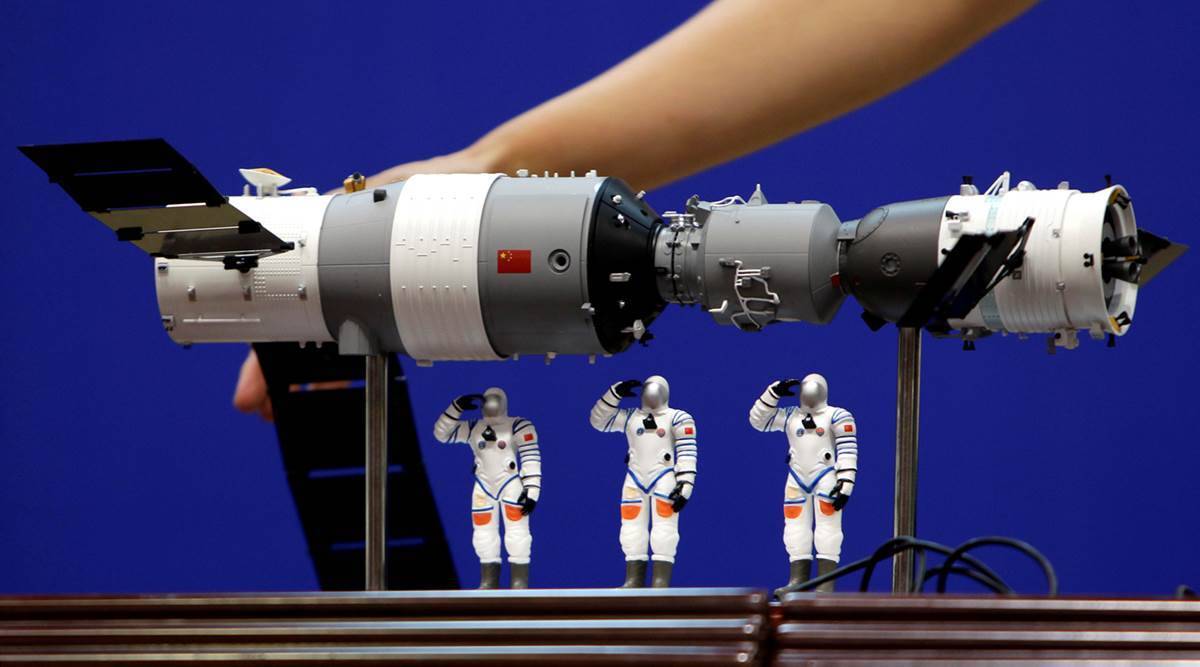 A model of the Tiangong-1 space lab module (L), the Shenzhou-9 manned spacecraft (R) and three Chinese astronauts is displayed during a news conference at Jiuquan Satellite Launch Center, in Gansu province, China June 15, 2012. (Image credit: Reuters)
A model of the Tiangong-1 space lab module (L), the Shenzhou-9 manned spacecraft (R) and three Chinese astronauts is displayed during a news conference at Jiuquan Satellite Launch Center, in Gansu province, China June 15, 2012. (Image credit: Reuters)China recently launched the 23-tonne Wentian (“Quest for the heavens”) laboratory module of its Tiangong space station to orbit. The new module has a massive pair of “solar wings” that rotates as the space station orbits our planet. A new video released by the China National Space Administration (CNSA) shows the solar arrays rotating, similar to a helicopter, as the Tiangong space station orbits the Earth.
Apart from providing additional navigation, propulsion and orientation control as a backup to the Tianhe Core Module, the Wentian laboratory’s primary purpose is to serve as a pressurised environment for researchers to conduct science experiments in freefall or zero gravity; experiments that could not be conducted on Earth for more than a few minutes. It successfully docked with the main Tianhe module within 13 hours of its launch on July 24.
The launch itself was controversial as the debris from the massive rocket used to launch the space station. Called Long March 5B, was scheduled for an uncontrolled re-entry into Earth’s atmosphere. The US Space Command confirmed that debris from the rocket re-entered over the Indian ocean and 12.45 PM EDT (10.15 PM IST) on July 30.
Reuters reported NASA Administrator Bill Nelson as saying, “All spacefaring nations should follow established best practices and do their part to share this type of information in advance to allow reliable predictions of potential debris impact risk. Doing so is critical to the responsible use of space and to ensure the safety of people here on Earth,” about the Chinese space mission.
Subscriber Only Stories
According to Space.com, Wentian’s solar arrays are each close to 30-metres-long. They have a combined wingspan of over 55 metres, giving each solar panel an area of about 110 square metres. In comparison, each of the solar arrays on the much larger International Space Station (ISS) has 73 metres of wingspan. ISS’s solar array covers a combined area of about 2,400 square metres.